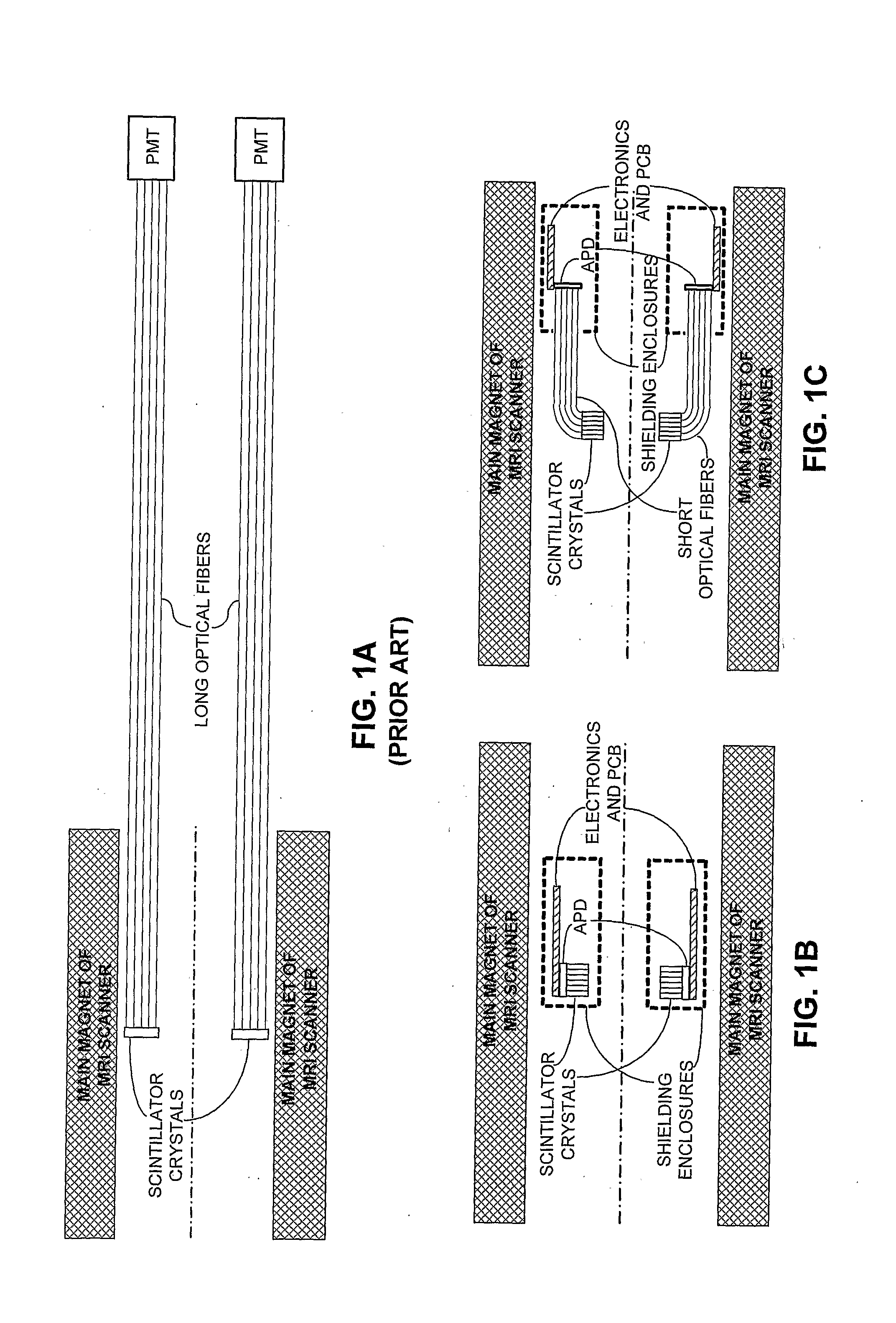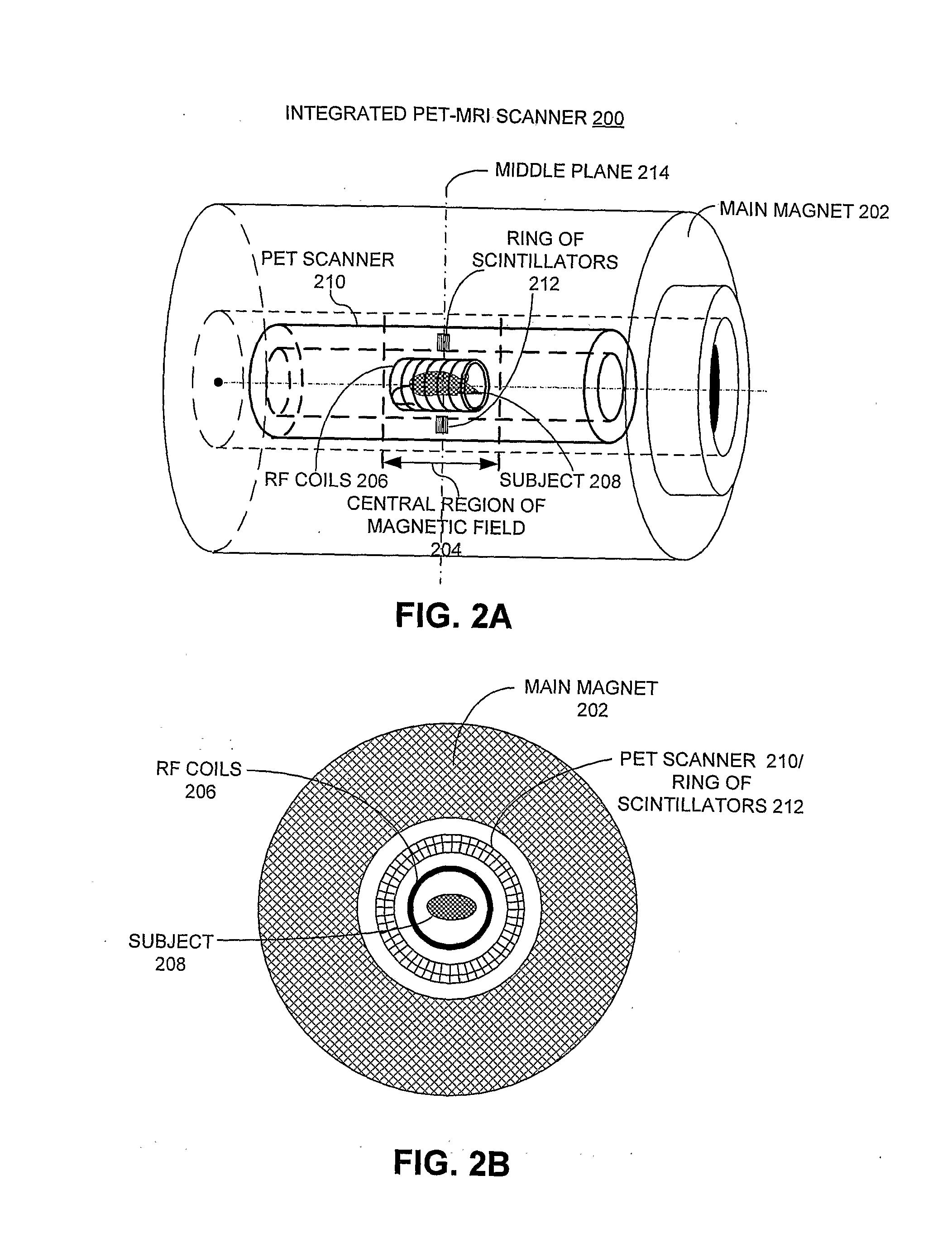Integrated Pet-Mri Scanner
a scanner and integrated technology, applied in the field of positron emission tomography and magnetic resonance imaging (mri) technologies, can solve the problems of poor spatial resolution, serious drawbacks of pet imaging, and poor spatial resolution of images produced by pet scanners, and achieve the effect of reducing electromagnetic interference (emi)
- Summary
- Abstract
- Description
- Claims
- Application Information
AI Technical Summary
Benefits of technology
Problems solved by technology
Method used
Image
Examples
Embodiment Construction
[0063]The following description is presented to enable any person skilled in the art to make and use the invention, and is provided in the context of a particular application and its requirements: Various modifications to the disclosed embodiments will be readily apparent to those skilled in the art, and the general principles defined herein may be applied to other embodiments and applications without departing from the spirit and scope of the present invention. Thus, the present invention is not limited to the embodiments shown, but is to be accorded the widest scope consistent with the claims.
Overall Structure of the Integrated PET-MRI Scanner
[0064]FIG. 1C illustrates an integrated PET-MRI system which couples scintillator crystals through short optical fibers to avalanche photodetectors (APDs) and associated electronics in accordance with an embodiment of the present invention. In doing so, the electronics and other metal components (e.g., shielding enclosures) of the PET scanner...
PUM
 Login to View More
Login to View More Abstract
Description
Claims
Application Information
 Login to View More
Login to View More - R&D
- Intellectual Property
- Life Sciences
- Materials
- Tech Scout
- Unparalleled Data Quality
- Higher Quality Content
- 60% Fewer Hallucinations
Browse by: Latest US Patents, China's latest patents, Technical Efficacy Thesaurus, Application Domain, Technology Topic, Popular Technical Reports.
© 2025 PatSnap. All rights reserved.Legal|Privacy policy|Modern Slavery Act Transparency Statement|Sitemap|About US| Contact US: help@patsnap.com



